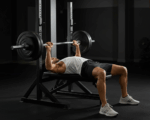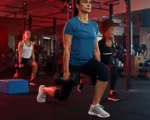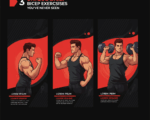Muscle cramps can strike at the most inconvenient times, whether you’re running the last mile of a marathon, heading into overtime in a game, or even trying to sleep after an intense day. These sudden, painful muscle contractions are common but preventable with proper care. Below, we outline key strategies to prevent common types of cramps like leg cramps, nighttime cramps, and exercise-induced cramps.
1. Warm Up and Train Gradually
Jumping straight into intense exercise without proper preparation can increase your risk of cramps.
- Warm Up Properly: Spend at least 5-10 minutes stretching and doing light cardio to prepare your muscles for exercise.
- Gradual Progression: Increase workout intensity and duration gradually over time to allow your muscles to adapt, reducing the risk of overexertion.
2. Stay Hydrated
Dehydration is a major cause of muscle cramps, especially during prolonged exercise when you lose fluids through sweat.
- Daily Water Intake: Drink enough water throughout the day. Multiply your body weight by 0.67 to find how many ounces of water you need daily. Add an extra 12 ounces for every 30 minutes of exercise. For instance, a 150-pound athlete exercising for 90 minutes needs about 136.5 ounces of water.
- Use Electrolyte Drinks: High-sodium sports drinks help replenish lost sodium, potassium, and other essential minerals that prevent cramps.
Fun Tip: Pickle juice, due to its high salt content, has been shown to reduce cramp duration by 37% when consumed immediately after cramps start.
3. Acclimate to Your Environment
Changes in temperature and climate can affect your body’s ability to cope during exercise.
- Warm Weather: High temperatures can elevate core body temperature, affecting muscle performance. Hydrate more rigorously and opt for lighter, breathable clothing.
- Cold Weather: Protect muscles with proper layering to avoid stiffness or cramping during winter workouts.
4. Keep Your Nutrition Balanced
Maintaining a nutrient-rich diet can prevent muscle spasms by fueling and repairing your muscles.
- Potassium-Rich Foods: Potassium regulates muscle contractions, so low levels can result in cramps. Foods like sweet potatoes, cooked spinach, beans, melons, and nuts are excellent sources.
- Include Sodium: Sodium plays a vital role in muscle function. Salty snacks or sports drinks can help maintain electrolyte balance.
- Carbohydrates for Energy: Carbs fuel your muscles during physical activity. Low carbohydrate stores (glycogen) can lead to cramping. Consume carb-rich meals before exercise and replenish during longer workouts (60+ minutes) with options like bread, potatoes, pasta, and beans.
5. Stretch Regularly
Stretching improves flexibility, promotes blood flow, and helps relieve muscle tightness that could lead to cramps.
- Post-Workout Stretching: Target the main muscles you worked, such as calves, hamstrings, and quadriceps, to encourage recovery.
- Nighttime Stretches: To avoid nighttime cramps, stretch your legs or try gentle yoga before bed.
6. Prevent Overexertion
Pushing past your limits without adequate rest can trigger cramps.
- Rest Days: Schedule rest or low-intensity activity days into your routine to allow muscles to recover.
- Avoid Carbohydrate Depletion: Eat balanced meals before intense activities, ensuring your muscles have sufficient glycogen reserves for both activation and relaxation.
Stay Ahead of Cramps
While muscle cramps may be common, they’re not inevitable. Following these preventive measures regularly will keep you moving, whether you’re playing a sport or tackling a challenging workout routine.
Stay hydrated, fuel your body with the nutrients it needs, and care for your muscles with stretches and tailored training to minimize risks. Now, go crush that 5K or ace your next match–cramp-free!








